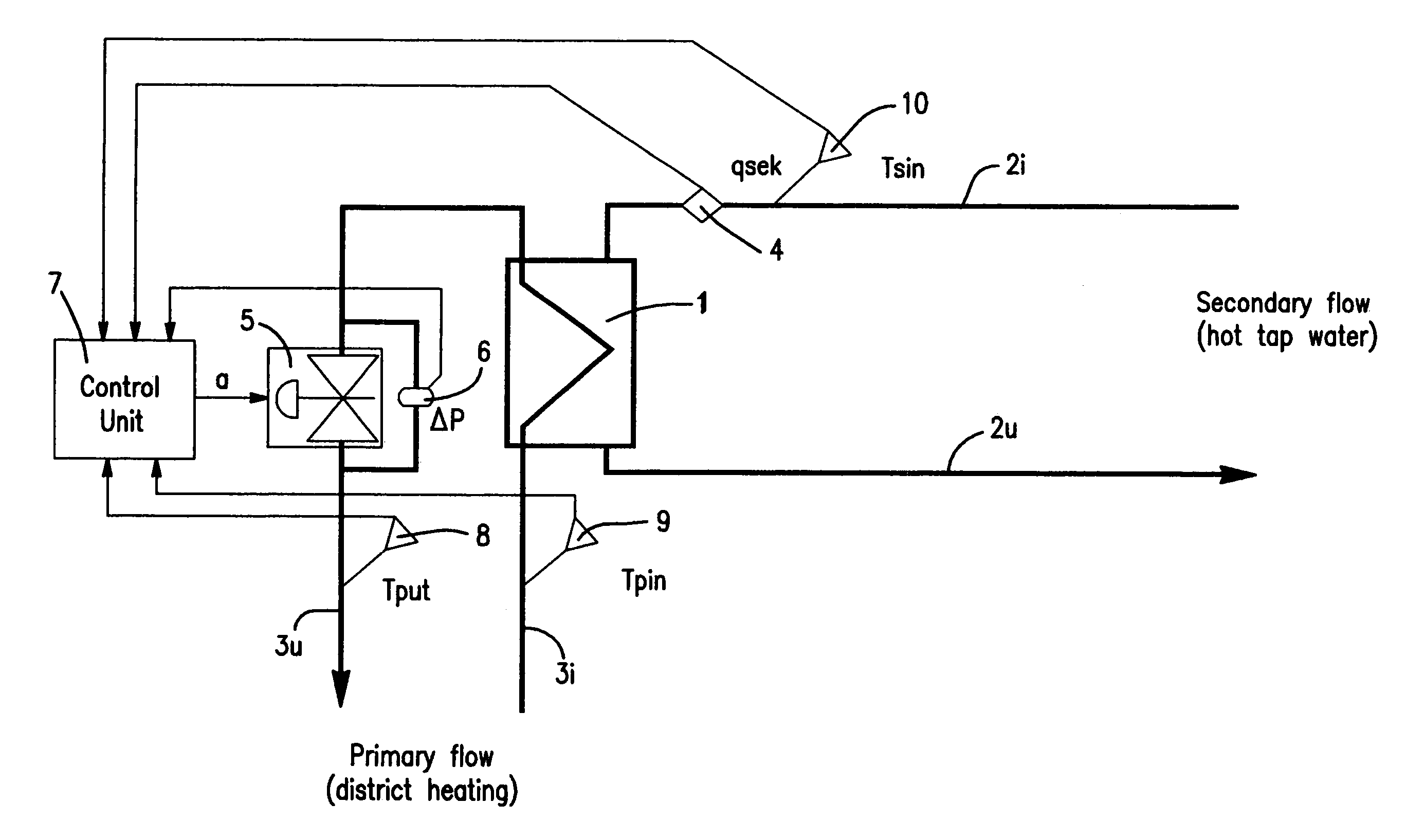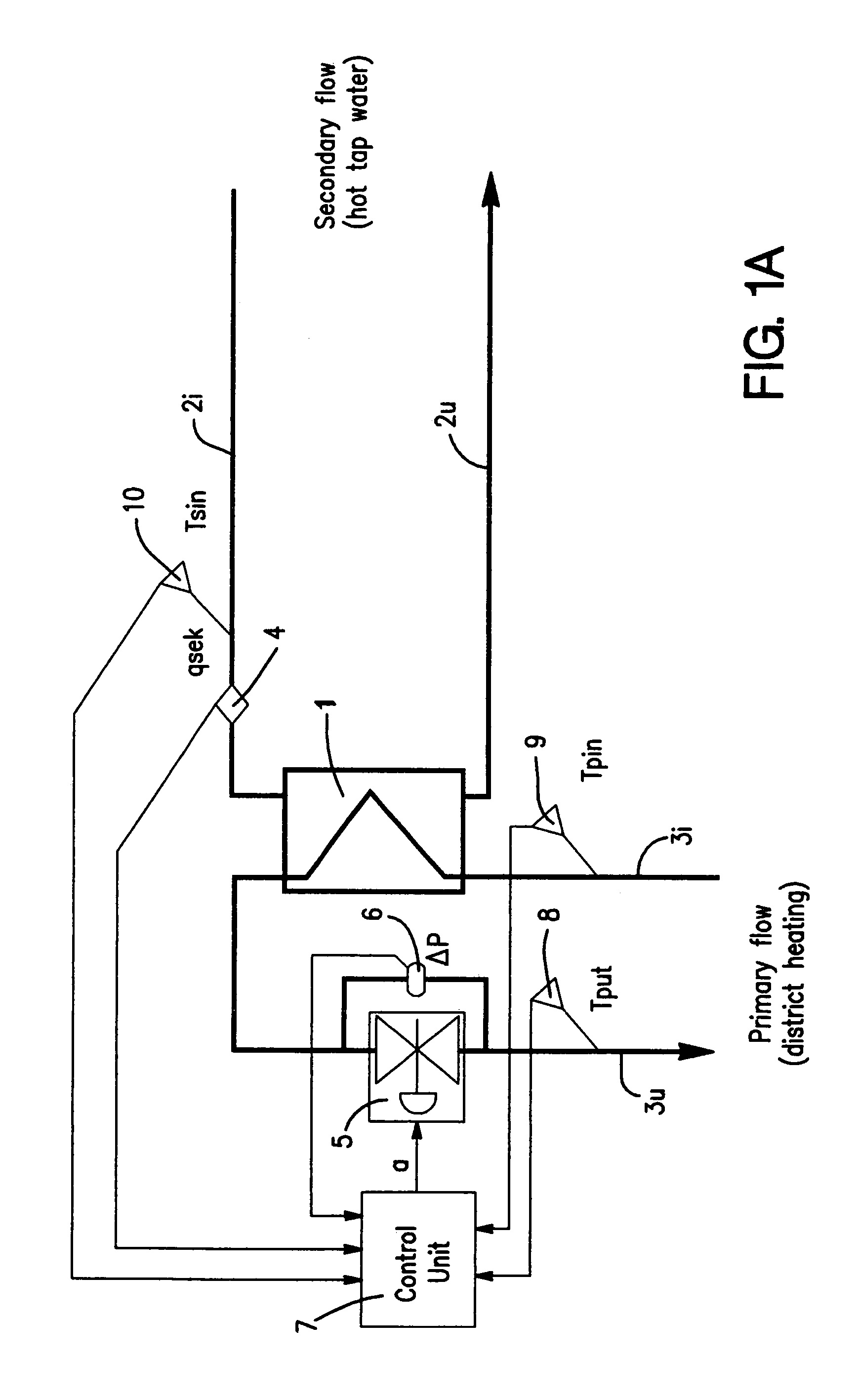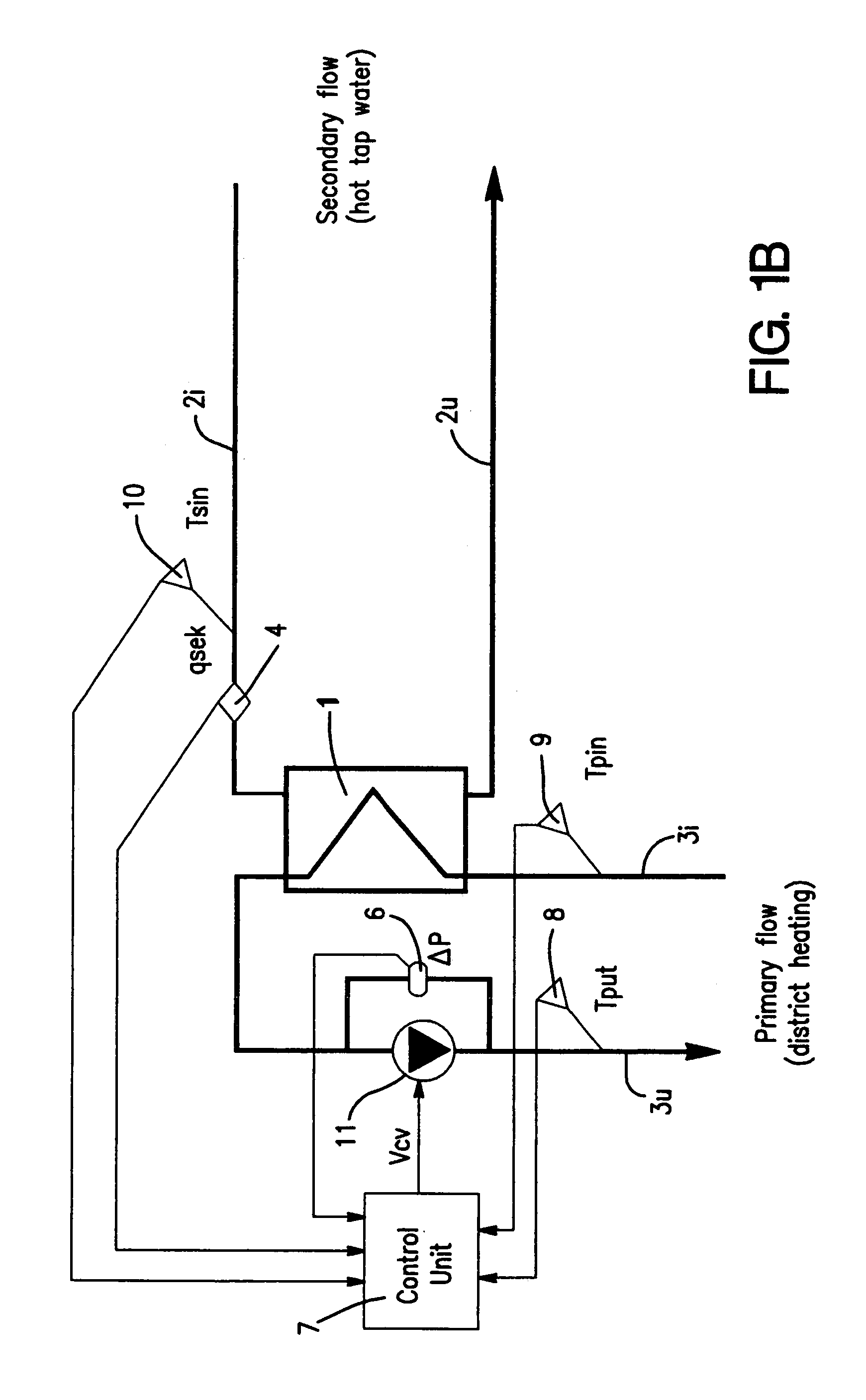Method and arrangement for controlling the temperature of the outstream flow from a heat exchanger and measuring produced heat
a technology of heat exchanger and temperature, which is applied in the direction of temperatue control, domestic heating details, electrical means, etc., can solve the problems of easy oscillation in control, risk of scalding, and inability to optimise statically programmed characteristics of the regulator with respect to all occurring operation scenarios, so as to reduce the time required
- Summary
- Abstract
- Description
- Claims
- Application Information
AI Technical Summary
Benefits of technology
Problems solved by technology
Method used
Image
Examples
Embodiment Construction
[0031]FIG. 1a shows an implementation of the invention in a district heating station of a consumer. The station comprises a heat exchanger 1, comprising a primary circuit 3, and a secondary circuit 2. The inbound primary flow 3i to the primary circuit 3 is constituted by hot water from the central heating system, while the outbound primary flow 3u is constituted by recycled water. The secondary flow 2i of the secondary circuit 2 is constituted by incoming fresh water, heated in the heat exchanger 1, while the tapped secondary flow 2i is constituted by heated hot tap water, conducted to the taps of the end consumer or the customer. When the temperature of the inbound secondary flow 2i can not be assumed to be otherwise known (for instance, through being constant and known beforehand), a temperature gauge is arranged in the inbound flow 2i (shown with dashed lines in the figures).
[0032]A flow meter 4 is arranged in the secondary circuit 2i–2u, preferably on the opening side, and the s...
PUM
 Login to View More
Login to View More Abstract
Description
Claims
Application Information
 Login to View More
Login to View More - R&D
- Intellectual Property
- Life Sciences
- Materials
- Tech Scout
- Unparalleled Data Quality
- Higher Quality Content
- 60% Fewer Hallucinations
Browse by: Latest US Patents, China's latest patents, Technical Efficacy Thesaurus, Application Domain, Technology Topic, Popular Technical Reports.
© 2025 PatSnap. All rights reserved.Legal|Privacy policy|Modern Slavery Act Transparency Statement|Sitemap|About US| Contact US: help@patsnap.com



